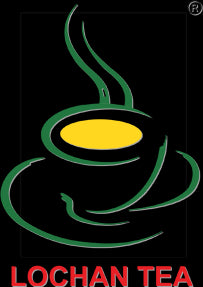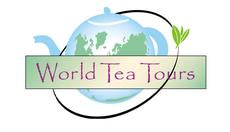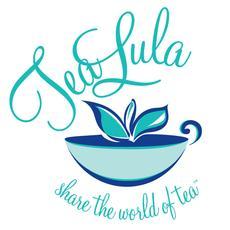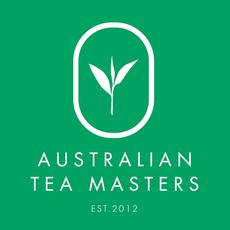Teas of Nepal - January 2023

Nepal has a relatively short history of tea growing however, it has become a major player in the specialty tea industry in the past 10-15 years. In addition to more benchmark teas which are similar to teas from neighboring Darjeeling, Nepali tea growers have quickly been venturing out in new directions creating some of the most amazing specialty teas produced. In this Cupping Event, members will examine and evaluate 8 teas from different tea producers in Nepal. Differences in geography, altitude, season, bush cultivar, leaf grade and of course processing technique will influence the spectrum of tastes, aromas and colors found in the samples. Register!! >>
Comparing Cultivars - July 2019

What does tea taste like? A question that is at once simple and complex. Good. Bad. Strong. Bland. Brisk. Smooth. Sweet. Sour. Rich. Weak. Thick. Thin. Why do teas taste different? Several factors play an important role in creating the final experience. One critical factor that often gets overlooked is, what kind of tea bush is it from? Many experienced tea lovers know that tea comes from the Camelia Sinensis. Is it possible to make the “same tea” but from different kinds of tea bushes? Through the generous and skilled assistance of ITCC member Shiv Saria, owner of Rohini and Gopaldhara tea estates in Darjeeling and Soongachi and New Glencoe tea estates in Dooars, several tea samples have been produced exclusively for this Cupping Event. At Rohini tea estate, Mr. Saria has gathered an extensive collection of cultivars. In this Cupping Event, we will compare and contrast the differences that are due to the tea bush cultivar. The samples have been made according to the black tea processing method from Darjeeling, India. The samples were all harvested and processed at the end of the Autumnal harvest period.
Production Methods - May 2016

The two main Processing Methods in tea manufacture are known as Orthodox (leaf tea) and CTC (cut, torn and curled). Orthodox tea manufacturer is usually more manual interaction with the leaf and care is taken in the handling. There are many resulting grades ranging from whole leaf to small broken particles. CTC manufacture is usually a more mechanical process where the leaves are fed through a set of sharp-toothed roller drums to intentionally break them into uniform granules. Orthodox teas can be more bulky whereas CTC teas are denser, getting more brewed cups per kilo of leaf.
Despite starting with the same leaf from the same bushes and processed in the same factory in the same season, the taste, aroma and color are significantly different between these two methods. This Cupping Event will feature 10 teas from 5 different tea gardens. Each garden is supplying one orthodox tea and one CTC tea for our comparison and learning. This eliminates the variables of source and season and provides a good vertical comparison between these two styles. Cuppers will learn about the benchmark features of not only the tea styles but also become more familiar with the unique features of each garden. Additionally, the teas will come from different tea producing regions allowing an exceptional horizontal comparison of geography.
Darjeeling First Flush - August 2011

Darjeeling, India is one of the most famous of all tea producing tea areas in the world and the tender, first leaves, plucked in usually late March are crafted into some of the best teas made. Highly prized and commanding top prices, First Flush Darjeeling teas are often referred to as the "Champagne of Teas" for their hints of Muscat grape which often typify the aroma and taste. All samples are plucked and produced in the beginning of the season.
Assam Second Flush - November 2011

Assam, in Eastern India, produces more tea than any other place in the country. Known for producing robust black teas the fertile soil and warm climate result in verdant tea gardens all year long. With over 400 tea gardens, the area is vast and tea production there dates to the 1830's. The Planter, a hands on farmer/manager was the ruler of the land and often lived in exceptional luxury if a bit remote.
Autumn Tie Guan Yin (Iron Goddess of Mercy) - January 2012

China's Fujian Province is the birthplace of oolong teas and the Southern city of Anxi is the home of Tie Guan Yin aka. Iron Goddess of Mercy. Produced for hundreds of years, Tie Guan Yins are some of the most prized and famous of Chinese teas. Some of the top Tie Guan Yin's sell for several hundred US$ per kilo. Today, there are two main production seasons, Spring and Autumn. The Autumn season produces teas of stronger fragrance and more subtle flavor. The Spring is the reverse.
Pu Er Cakes, Sheng (Raw) and Shu (Ripened) - March 2012
One of the oldest of teas, Pu Er teas, named for the Southern Yunnan Provincial city which was a famous center for tea trading, are fermented in addition to the other processing steps they may undergo. The two "styles" of fermentation are known as Sheng (raw or natural) and Shu or Sho (ripend or cooked). In addition, the raw materials for Pu Er can be green black, white or other types of tea. Though they are also found loose or in other shapes, this Cupping Event will explore the traditional round "cakes" and will range in age, fermentation style and raw material.
Dragon Well (Long Jing) Early Spring – May 2012

For nearly 600 years Dragon Well tea (aka Long Jing or Lung Ching) has been produced in the West Lake area of Hangzhou, China. There are 4 main historical production centers but the reputation of this, China's most famous tea, has resulted in nearby areas producing this tea as well. With top "Gift Grades" selling for US$1,000 per kg and up, demand for Pre-Qing Ming picked teas (around April 4-6) as well as other Spring grades is very high in the domestic market and the best rarely makes it out of China. All samples are plucked and produced in early Spring and include Pre-Qing Ming and Post-Qing Ming teas.
Bi Luo Chun - Early Spring - May 2012

For nearly 700 years Bi Luo Chun (aka. Pi Lo Chun, Green Snail Spring) has been one of China's most famous teas and has been a tribute tea to Emperors and officials. Authentic Bi Luo Chun comes from Suzhou, called the Venice of China. With their astounding fragrance, the early Spring picked, down-covered fluffy buds are tender yet flavorful offering hints of honeydew melon or ripe squash. Samples for this Cupping Event come from the traditional East Peak (Dong Ding) and West Peak (Xi Ding) gardens as well as other nearby producers.
Future Planned Cupping Events:
Teas of Nepal - December 2020
India - Comparing Cultivars
Manufacturing Methods
China - Dan Cong Oolongs
Japan - Shin Cha
China - Wuyi Oolongs
Teas of Sri Lanka (Ceylon)
India - Production Defects (learing how to recognize manufacturing shortcomings)
Japan - Gyokuro
Taiwan - Oolongs
India - Nilgiri Frost teas















